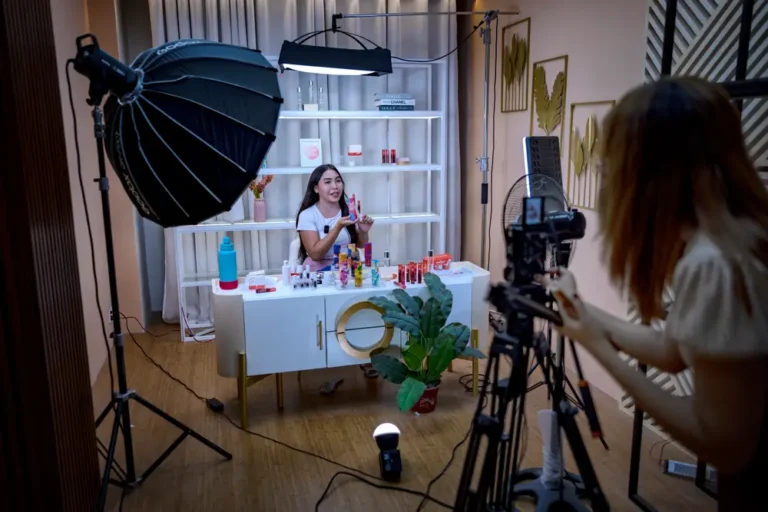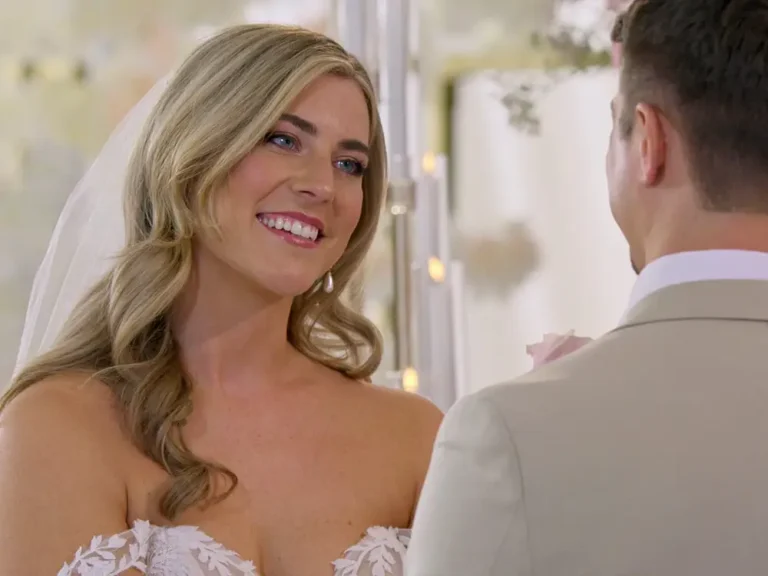Men deliver the news on social media more than women do, new data shows
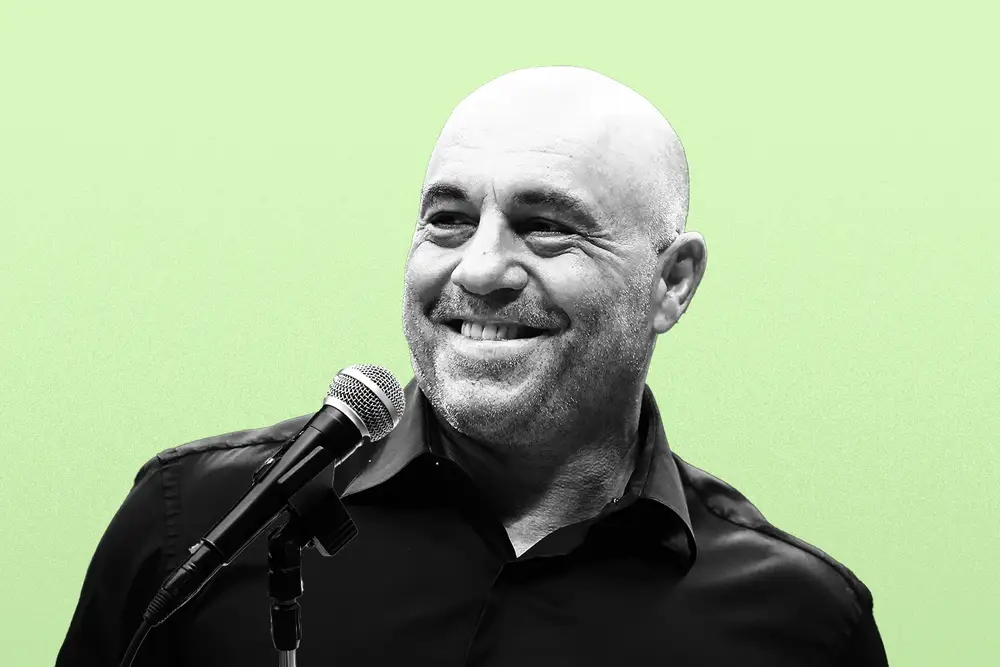
Joe Rogan’s podcast isn’t solely about news, but his platform has become a top place where people learn about current events.
News anchoring was once a male-dominated enterprise led by figures like Walter Cronkite and Edward R. Murrow. That gender skew is showing up again in the latest platform for news: social media.
Male influencers far outnumber female creators when it comes to delivering the news on social media, according to a new study from the Pew Research Center.
Pew analyzed a sample set of 500 news influencers with at least 100,000 followers and found that 63% were male and 30% were female. The remaining 7% were either non-binary or had undetermined genders.
That gender gap stands out for a few reasons:
- First, there’s a much narrower gender divide (51% male and 46% female) among working US journalists, per a 2022 Pew survey.
- Second, women tend to outnumber men in the influencer industry broadly. Influencer agency Izea saw a gender gap when it compared the share of sponsorship deals earned by women (77%) and men (21%) in 2022.
As creators take on a bigger role in educating the public about current events, the gender gap among social-media news influencers could shape what stories end up reaching people.
The social-media gender split was a hot-button issue in the 2024 US presidential election, as both parties courted influencers to make content around their campaigns.
Donald Trump and JD Vance may have benefited from a media strategy centered on male influencers. The candidates went on a tour this year to reach young men via appearances with Joe Rogan, the Nelk Boys, and Adin Ross. John Della Volpe, director of polling at the Harvard Kennedy School Institute of Politics, described the strategy as “bro whispering.” Exit polls suggest Trump did gain ground with young men in 2024 compared to his 2020 run.
Kamala Harris turned to a different niche of creator to try to reach young women, including an interview with “Call Her Daddy” podcaster Alex Cooper.
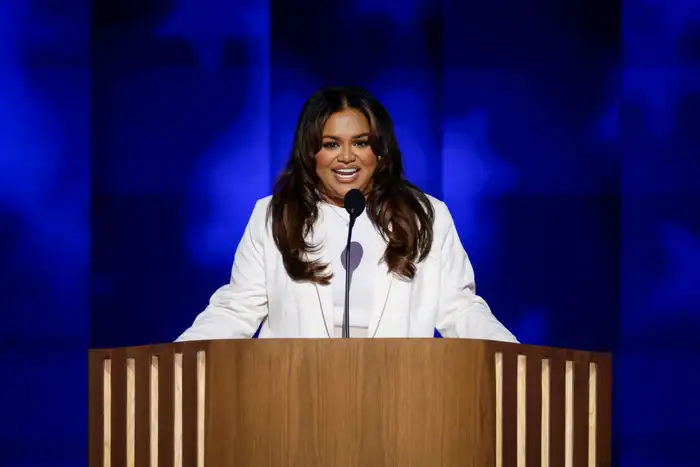
Influencers appeared at both party conventions this year, including Nabela Noor, above, who spoke at the Democratic National Convention.
Harris also made overtures to reach men, such as an appearance on the sports podcast “All The Smoke,” as well as on “The Howard Stern Show.” But in the wake of her election loss, some political commentators lamented her decision not to appear on Rogan’s podcast, which is consistently the top-ranked show on Spotify and Apple Podcasts.
In Pew’s analysis, there was a much smaller (and flipped) gender gap in the overall audience for news content on social media. Twenty-three percent of US adult women said they regularly got news from news influencers, compared to 19% of men.
“The influencers who are providing news and people who are getting news don’t necessarily look the same,” Galen Stocking, a senior computational social scientist at Pew who coauthored the report, told B-17.
This suggests that a strategy of trying to reach women voters by focusing on podcasts anchored by women could miss a portion of the electorate.
Among young people, 37% of those aged 18 to 29 said they regularly got news from news influencers, per the data.
Are news influencers widening the US political gender gap?
Young people are increasingly divided along partisan lines. Men between the ages of 18 and 29 are becoming more conservative and women in that age group are becoming more liberal, per Gallup polling. The extent to which media diets are contributing to that change is harder to drill down, however.
Pew’s sample set of news influencers skewed slightly conservative, with 27% identifying as right-leaning and 21% as left-leaning. Still, only around half of the news influencers explicitly shared their political orientation.
Whatever their impact on partisanship, creators have clearly taken on a bigger role in shaping the information landscape as traditional newsrooms have lost some trust. Fifty-nine percent of US adults surveyed by Pew in September said they had a lot or some trust in information from national news organizations, down from 76% in 2016. Trust in information from social media remained steady over the same period, growing from 34% to 37%.
YouTube had the biggest gender gap, while TikTok’s was minimal
The gender divide among news influencers was fairly consistent across all platforms in Pew’s study. The one exception was TikTok, where 50% of news creators were male and 45% were female.
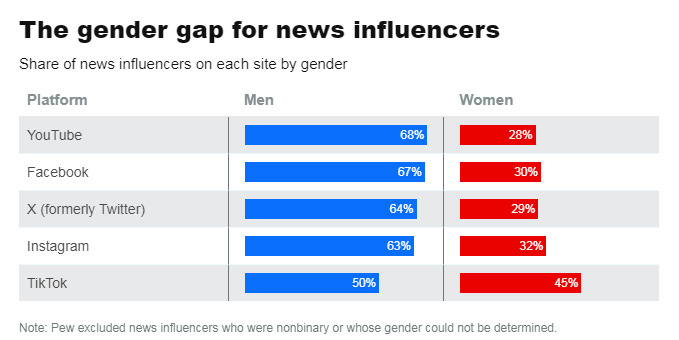
TikTok has become an increasingly important news source among young adults, who turn to the app for news commentary and on-the-ground videos tied to current events.
YouTube saw the biggest gender divide among news influencers, a gap that other researchers said showed up in the YouTube audience, too. A Spring poll of 18- to 29-year-old Americans by the Harvard Kennedy School Institute of Politics found that 31% of young men turn to YouTube to learn about current events, compared to 20% of women.

